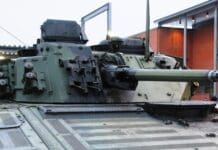This post is also available in:
 עברית (Hebrew)
עברית (Hebrew)
Delivering life-saving care in a battlefield environment is a complex challenge. New wearable sensors will monitor the situation of soldiers in the battlefield as well as teams during rescue missions. The U.S. Air Force recently wrapped up field trials for the Battlefield Assisted Trauma Distributed Observation Kit, or BATDOK.
The BATDOK is a software package installed on a smartphone, tablet, or other wearable wireless device. It’s fed information from sensors placed on a battlefield patient, allowing the medic or even those without medical training to simultaneously monitor the vital signs of multiple wounded soldiers in the chaotic environment of the battlefield. Alerts can also set to deliver audible or visual ques if the soldier’s condition worsens.
According to thomasnet.com, this data can be shared with medical personnel not on site and run against military electronic health records, and a medical library is available for on-site reference.
The attached sensors also give the exact location of each patient on battlefield maps.
The system has seen field-testing with Air Force flight medics, Pararescue Jumpers, and Special Forces personnel, with the developers on the scene to evaluate and tweak the system.
BATDOK is a tool that seamlessly integrates mobile capabilities for Airmen in the field, said Dr. Gregory Burnett, of the Airman Systems Directorate in the Warfighter Interface Division of the 711th Human Performance Wing. Burnett managed the development of BATDOK for the Air Force. “BATDOK is a multi-patient, point of injury, casualty tool that assists our human operators and improves care,” said Burnett, according to science.dodlive.mil . “It can be a real-time health status monitoring for multiple patients, a documentation tool, a user-definable medical library, a portal to integrate patient data into their electronic health records, and finally it is interoperable with battlefield digital situation awareness maps, which helps identify the exact location of casualties.”
BATDOK could also be used on humanitarian missions, where a commander monitors a team entering an earthquake- or tsunami-ravaged area.
The developers maintained constant interaction with the operators from their deployment, and got their feedback throughout the process. “From day one, every interface, every button, every menu, was user-validated by pararescue Airmen and combat rescue officers that were involved in the design, integration and testing process,” said Burnett.
The development has its roots back in 2014, when the U.S Air Force initiated its Battlefield Air Targeting Man-Aided Knowledge or BATMAN project to evaluate the potential application of wearable technology that was either available or in development.


























